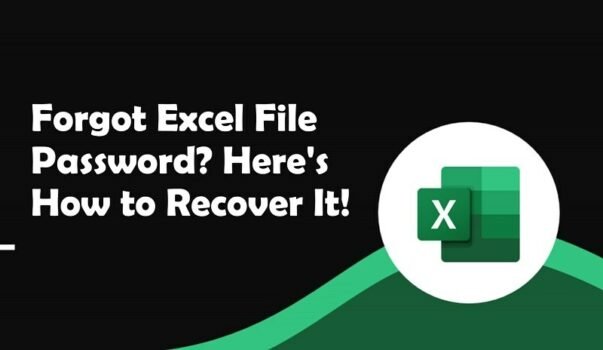Excel is a popular software tool for storing and sharing important data and numerical calculations. Given the confidential nature of its content, many people choose to encrypt their Excel files for added security. However, forgetting your Excel password can be a problem. The good news is that multiple methods are available to recover your forgotten Excel password, including PassFab for Excel, VBA, or a ZIP archive utility.
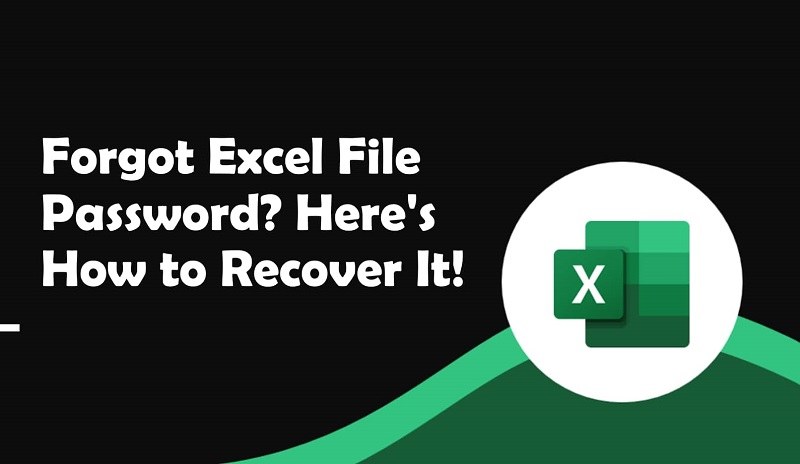
Whether you’re new to Excel or an experienced user, our guide will help you quickly recover your lost password and regain access to your essential data. Let’s explore all the methods to recover an Excel password and regain access to your crucial information.
Recover Forgotten Excel File Passwords with Excel Password Recovery Software
If you’re trying to recover your forgotten Excel password and are looking for an easy solution, PassFab for Excel is the way to go. It works with all Excel formats, including .xls, .xlsx, .xlsm, and .xlsb. With PassFab for Excel, you can recover both the Excel Open password (for file-level protection) and the Excel Restrictions password (for a workbook or worksheet-level protection).
Above all, PassFab for Excel is user-friendly and is designed with a straightforward interface. This makes it easy for even the least tech-savvy individuals to recover their data if they forget the Excel password.
Here’s how to recover an Excel password using PassFab for Excel
Step 1. Download and Install PassFab for Excel. Launch the program and choose “Recover Excel Open Password.”
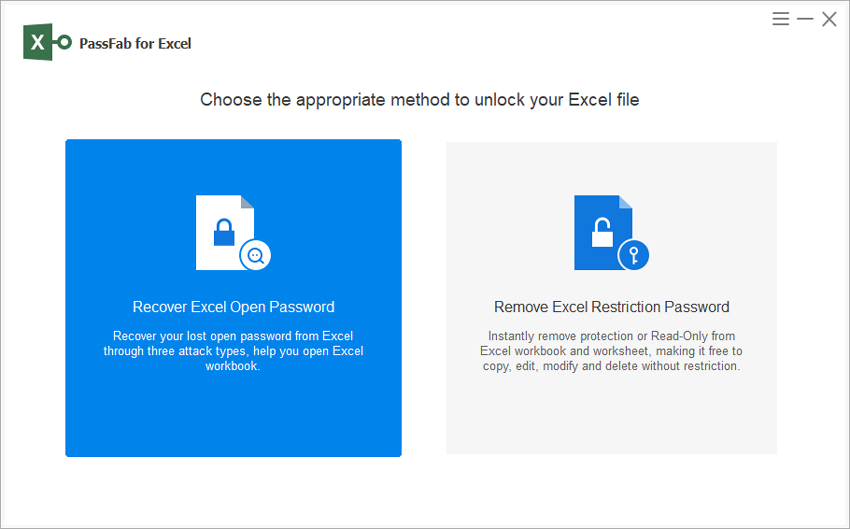
Step 2. Click “Add” on the main screen to import your password-protected Excel file. Use File Explorer to find your desired file, then click “Open” to import it into the program.
After importing the file, select a method to recover your Excel password. PassFab for Excel has three attack modes: Dictionary Attack, Brute Force with Mask Attack, and Brute Force attack.
And Click on “Recover.”
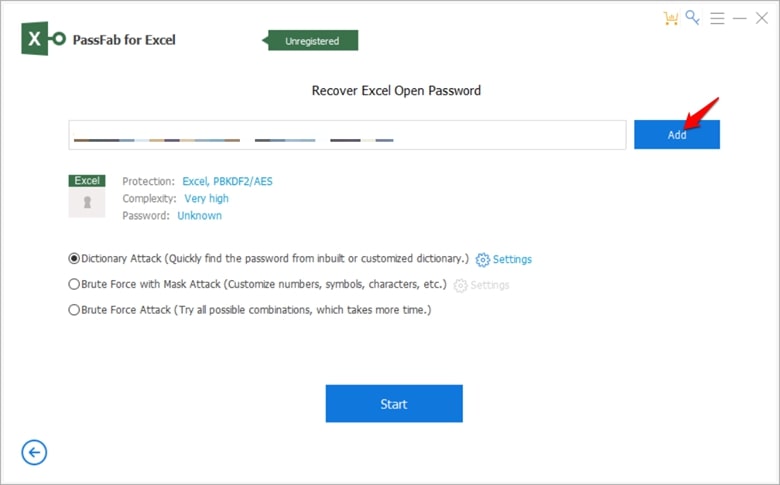
Step 3. Wait for the program to recover the forgotten Excel file password. And click “Copy” once the password has been found. Paste the recovered password to unlock your Excel file.
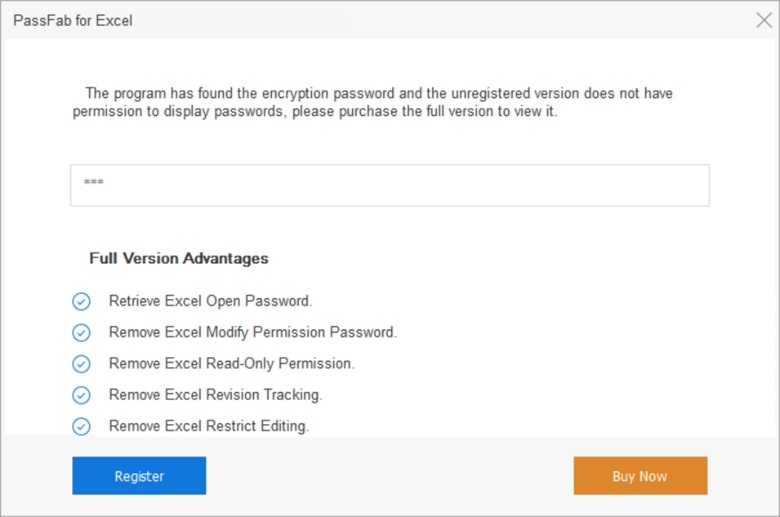
It’s genuinely effortless to use PassFab for Excel and recover your files if you forgot the Excel password.
Recover Forgotten Excel File Password Online
There are also online tools that can help you if you forget the Excel password. One of the most reliable tools is the Password-Find.
Password-Find assists you with recovering Excel files. Unlike PassFab for Excel, it does not require downloading any tools. Instead, it is an online service that only asks you to upload Excel files. The service will recover the Excel file password for you.
Here’s how to recover forgotten Excel file passwords online using Password-Find:
Step 1. Go to the official Password-Find official site.
Choose “UNPROTECT YOUR FILE” on the main page. Choose “Browse” to recover your file if you forgot the Excel password.
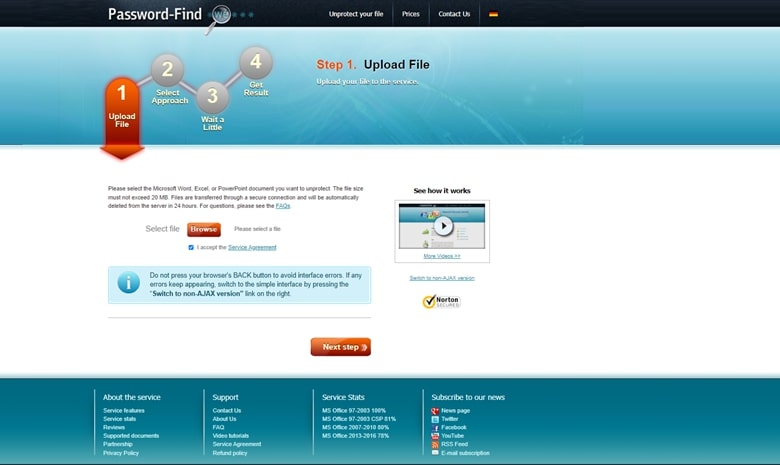
Step 2. In the next step, click the “Find Password” or “Remove password” button to initiate the Excel password recovery process.
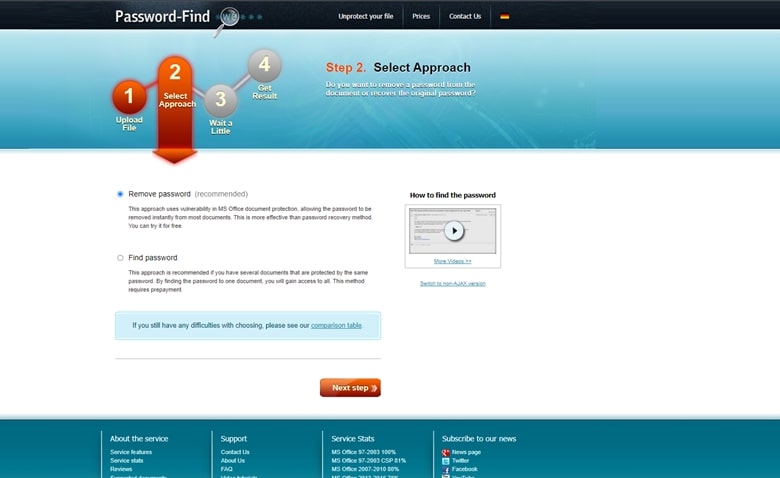
Step 3. Wait for the Password-Find program to recover the Excel file password. The wait time depends on the complexity of the password.
Depending on your choice in Step 2, Password-Find will display the recovered password or provide you with an unlocked file version.
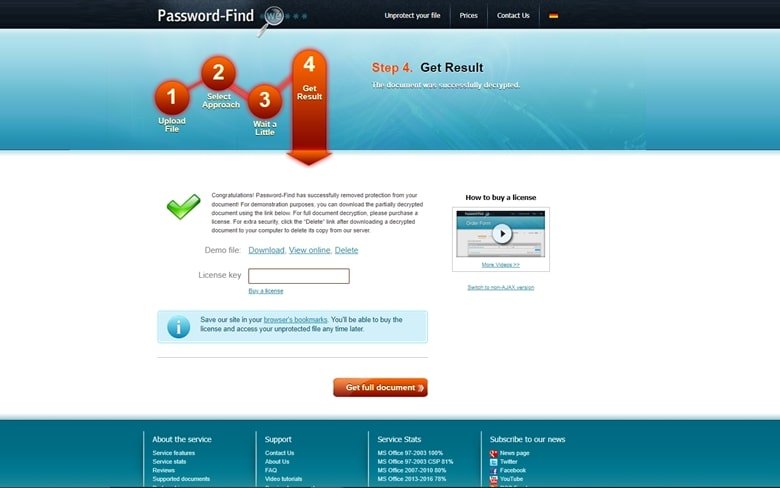
It is important to note that Password-Find may not be able to recover Excel files protected with complex or long passcodes. Password-Find requires you to upload your locked Excel file to their servers, so if the file contains confidential information, proceed with caution and upload at your own risk.
Recover Forgotten Excel Sheet Password with VBA
Up until now, we have discussed how to recover Excel file passwords. But what if you forgot the Excel sheet password and needed to modify the contents already visible to you?
Several methods are available to help you remove editing restrictions if you have forgotten the Excel sheet password. However, VBA (Visual Basic for Applications) is the most straightforward and effective technique. When combined with the right macro, VBA becomes a powerful scripting language that can handle password recovery at the Excel worksheet level.

You can use VBA in various versions of Excel, including Excel 2007, 2010, 2013, 2016, and later versions. However, VBA might not be effective for long or complex passwords, but what’s substantial is VBA can recover Excel sheets without losing data when successful.
Here’s how to use VBA to recover your data if you forgot the Excel password:
Step 1. Open the desired Excel file and access the protected Excel sheet workbook.
Simultaneously press Alt+F11 to open the VBA editor within the Excel program.
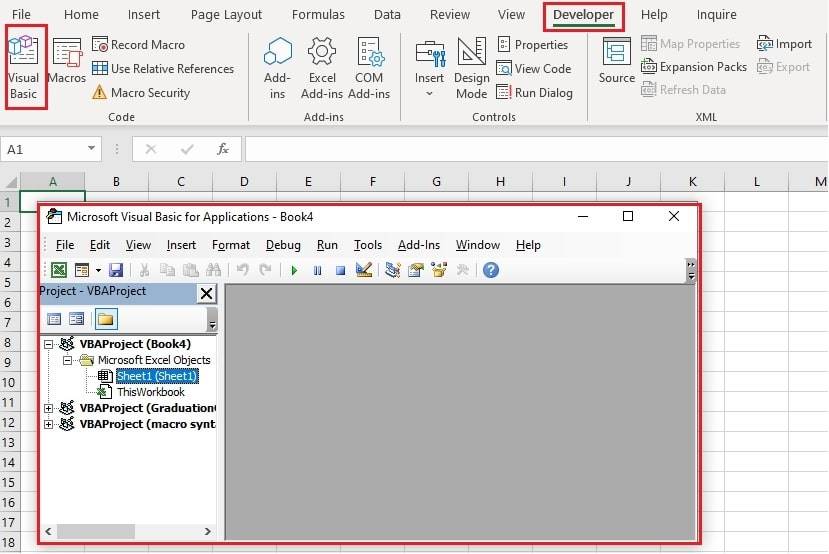
Step 2. Within the VBA menu, go to “Insert” and choose “Module” to add a new module in the VBA editor.
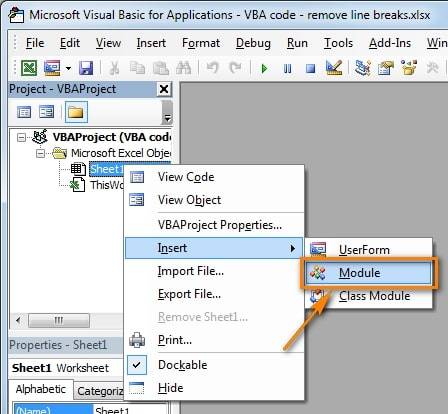
Copy the following code in the new module:
Sub UnprotectSheet()
Dim i As Integer, j As Integer, k As Integer
Dim l As Integer, m As Integer, n As Integer
Dim i1 As Integer, i2 As Integer, i3 As Integer
Dim i4 As Integer, i5 As Integer, i6 As Integer
On Error Resume Next
For i = 65 To 66
For j = 65 To 66
For k = 65 To 66
For l = 65 To 66
For m = 65 To 66
For i1 = 65 To 66
For i2 = 65 To 66
For i3 = 65 To 66
For i4 = 65 To 66
For i5 = 65 To 66
For i6 = 65 To 66
For n = 32 To 126
ActiveSheet.Unprotect Chr(i) & Chr(j) & Chr(k) & _
Chr(l) & Chr(m) & Chr(i1) & Chr(i2) & Chr(i3) & _
Chr(i4) & Chr(i5) & Chr(i6) & Chr(n)
If ActiveSheet.ProtectContents = False Then
MsgBox "The password is: " & Chr(i) & Chr(j) & Chr(k) & _
Chr(l) & Chr(m) & Chr(i1) & Chr(i2) & Chr(i3) & _
Chr(i4) & Chr(i5) & Chr(i6) & Chr(n)
Exit Sub
End If
Next n
Next i6
Next i5
Next i4
Next i3
Next i2
Next i1
Next m
Next l
Next k
Next j
Next i
End SubStep 3. Click anywhere on the code and press F5 to execute the code.
Wait for Visual Basic for Applications to find the Excel sheet password. Once found, a message box will appear with the password. Use it to remove restrictions and begin modifying the Excel sheet.
Recover Forgotten Excel Sheet Password Using ZIP
Another straightforward method for recovering forgotten Excel sheet passwords involves using a ZIP archive. This works because Excel files (.xlsx or .xlsm) are essentially compressed archives containing various components. By converting the Excel file to a .zip archive, you can access its internal structure and bypass the sheet password.
However, this method is not compatible with older Excel versions like .xls. Additionally, it requires editing the internal structure of the Excel file, so it is crucial to follow all the steps accurately to prevent file corruption.
Here’s how to recover forgotten Excel sheet passwords using ZIP:
Note: Create a copy of the restricted Excel file before proceeding, as this method involves modifying the file to remove restrictions.
Step 1. Right-click on the desired Excel file and choose “Rename” from the context menu.
- Change the file extension from .xlsx or .xlsm to .zip.
- Press Enter and confirm when prompted.
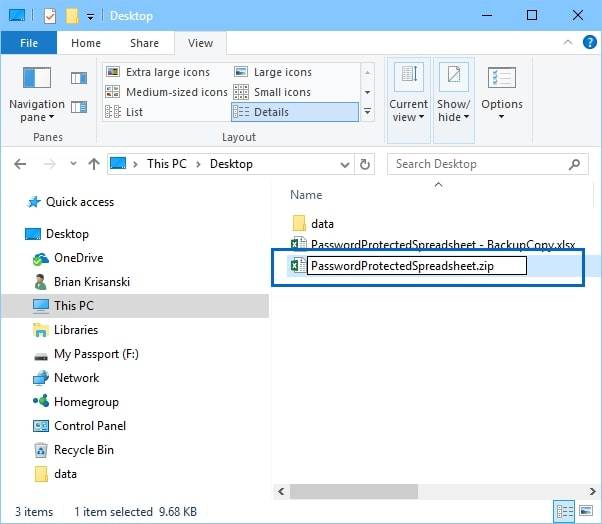
Step 2. Right-click on the created .zip file and choose “Extract All” from the context menu.
- Open the extracted folder, and open the “xl” folder. Within the xl folder, you will find “worksheets.“
- Within worksheets, you will find sheet1.xml, sheet2.xml, and sheet 3.xml — depending on the number of sheets in the Excel file.
- Locate the Excel sheet for which you forgot the password.
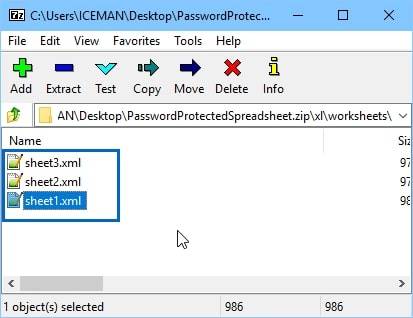
Step 3. Open the desired sheet#.xml file using a text editor like Notepad.
- Press Ctrl+F and search for “sheetProtection” — you will find the tag that starts with “<sheetProtection” and ends with “/>.”
- Delete the entire tag (including “<” and “>” characters).
- Save the changes. And close the text editor.
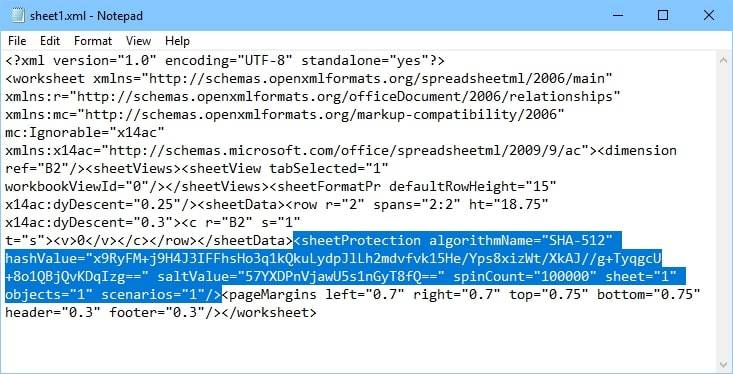
Step 4. Now go back to the extracted folder and compress it back into a “.zip” file.
- Change the file extension from .zip to its original extension — .xlsx or .xlsm.
- And confirm when prompted.
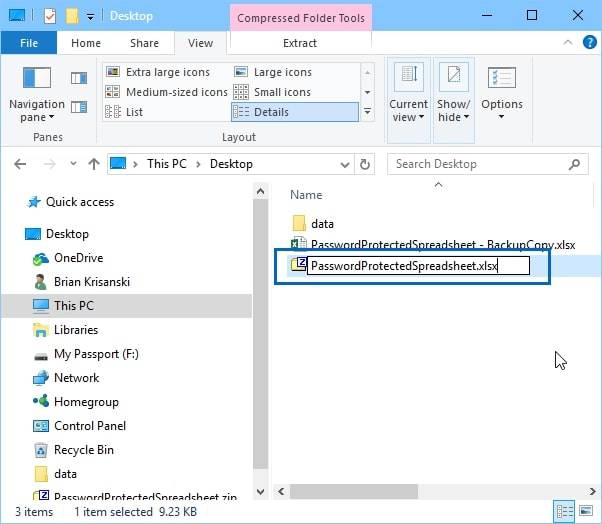
You can now open the Excel sheet, and it will allow you to modify its contents.
Frequently Asked Questions About Forgotten Excel File Password
How to open an Excel file with a password?
- Double-click on the protected Excel file.
- You will see a password box, enter the correct password, and click “OK” to unlock the file.
This will open the Excel file, given you entered the correct password.
How to remove Workbook or Sheet-level protection from an Excel file?
To remove protection from the workbook or sheet, click on “Protect Workbook” or “Protect Sheet” under the “File” tab. Then, select “Unprotect Workbook” or “Unprotect Sheet,” enter the password again to confirm, and click “OK” to remove the protection.
If you don’t know the password, you can try one of the password recovery methods or contact the file owner for assistance.
Can PassFab for Excel recover Excel files of any size?
Unlike the Password-Find service, which puts a cap on file size, PassFab for Excel can remove passwords from Excel files of any size.
In addition, it can recover protected Excel files that use a certificate.
What happens if the Excel file is corrupted during the password recovery process?
If the Excel file becomes corrupted during the password recovery, such as when using the .zip archive or VBA method, it may not be recoverable. Therefore, creating a backup of the Excel file is best before attempting any of the methods outlined in this guide.
Conclusion
Whether you’ve forgotten your Excel file or Excel sheet password, multiple solutions are available to help you regain access to your essential data.
For file-level password recovery, you can use PassFab for Excel, which supports all Excel formats and offers multiple password recovery methods. Alternatively, you can consider Password-Find if you’re comfortable uploading the Excel file to a third-party server.
Both VBA and the ZIP method are effective options for recovering Excel sheet passwords. However, each method has its advantages and disadvantages. Therefore, choose the appropriate approach based on your situation and always create a backup of your Excel file before attempting these methods.

